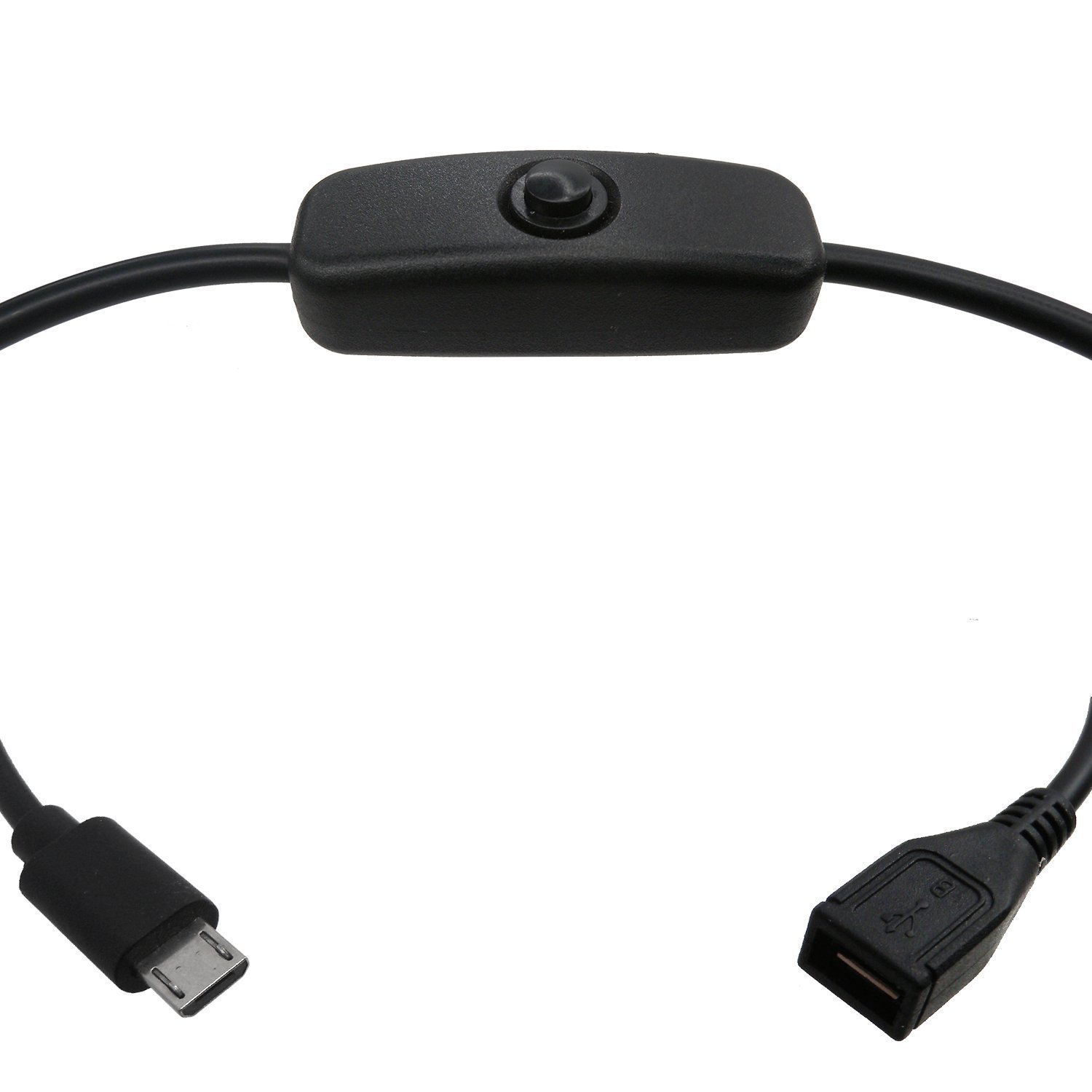{SOLVED} How to make a momentary push button that exit games and take me back to game menu ?
-
@O-M-A-A And if you look to the python code, what do you see? There is PIN33 used for input. Which is obviously not used in your setup? Please change the GPIOinit and buttonState2 to 26
Please use the script that @mitu posted!
Because he also used the BCM Pin layout as setting which makes things a lot easier to hook up. -
@mitu @cyperghost
I'm not concerned much on the power button, as I'm planning to install a micro usb click button like this one:
So I can remove the push button pins on gpio 3 and install the exit emu button instead.
-
@O-M-A-A The numbering can be done in 2 ways
- pin number (1 - 40) - the inner numbers in your picture.
- so called Board/BCM (?) numbers - the outer labels in your picture.
If you look at how your wiring picture looks like, you see that the power wires are using pins 5 and 6, not GPIO5 and GPIO6. The numbers in your script are the PIN numbers, not the GPIO (outer) labels.
-
@mitu You surly already know this website ;) https://pinout.xyz/#
Maybe this will help @O-M-A-A, tooCan use it in GPIO 3 instead of the power button ? and remove the power button wires as I don't need it.
The GPIO is a bit special one. It let's the Raspberry recover/restart from deep sleep mode. So it's very common in use for power off/power on events.
Do use this switch cable to full cut power from the Pie - after Powerdown. But never cut power by force -
@mitu @cyperghost
the exit emu button is on pins 25 and 26 which GPIO 7 I was usingCan use it in GPIO 3 instead of the power button ? and remove the power button wires as I don't need it.
-
@O-M-A-A said in How to make a momentary push button that exit games and take me back to game menu ?:
Can use it in GPIO 3 instead of the power button ? and remove the power button wires as I don't need it.
You do need it, because that switch that you want to buy will not shut down properly your PI (i.e. will not run the
shutdowncommand), it will merely cut down the power. -
@mitu I see, so what to do now
-
@O-M-A-A Hope I tranlated correct
"bite together and pull through the cheeks"
You are close to finish this!
-
@mitu @cyperghost yeah, thank you.
it looks awesome, everything is working except the 1 button which is not a big deal, I will search for my problem. thanks guys a lot for your help and patience. I'm rly grateful for the time u spent it with a newbie ;D.
-
@cyperghost @mitu
I was thinking, I have tried the button with every pins, one of these pins executed the letter H on the keyboard, and I was able to make the button as hotkey.
is it possible to make this key also perform the start button, so when pressed will function as a start and hotkey which will exit the emulator ;D. -
I just tried on by PCB and the reset button is wired on PIN3, with the other one wired to a GND pin.
Here's a little script you could run (
python <script.py>) to check a PIN for a momentary press#!/usr/bin/python import RPi.GPIO as GPIO import time import subprocess pinNo = 3 GPIO.setmode(GPIO.BOARD) GPIO.setup(pinNo, GPIO.IN) while True: #grab the current button state buttonState2 = GPIO.input(pinNo) if not buttonState2: # Reset emulator print "pressed " + str(pinNo)You can test various pins for button press by replacing changing
pinNoto your desired Pin number.The original script I posted can probably be simplified as
#!/usr/bin/python import RPi.GPIO as GPIO import time import subprocess GPIO.setmode(GPIO.BOARD) shutdownPin=5 resetPin=3 GPIO.setup(shutdownPin, GPIO.IN) GPIO.setup(resetPin, GPIO.IN) oldButtonState1 = True while True: #grab the current button state buttonState1 = GPIO.input(shutdownPin) buttonState2 = GPIO.input(resetPin) # check to see if button has been pushed if buttonState1 != oldButtonState1 and buttonState1 == False: # shutdown subprocess.call("shutdown -h now", shell=True, stdout=subprocess.PIPE, stderr=subprocess.PIPE) oldButtonState1 = buttonState1 if not buttonState2: # Reset emulator print "Reset pressed" subprocess.call("/home/pi/scripts/multi_switch.sh --es-closeemu", shell=True, stdout=subprocess.PIPE, stderr=subprocess.PIPE) time.sleep(.3) -
@mitu dudeeee,
it works ;DDD, thank you so much for ur efforts, I couldn't believe it xD
ur amazing, I really appreciate it.
Also, thanks to you @cyperghost u guys are awesome -
#!/usr/bin/python import RPi.GPIO as GPIO import time import subprocess GPIO.setmode(GPIO.BOARD) shutdownPin=5 resetPin=3 GPIO.setup(shutdownPin, GPIO.IN) GPIO.setup(resetPin, GPIO.IN) oldButtonState1 = True while True: #grab the current button state buttonState1 = GPIO.input(shutdownPin) buttonState2 = GPIO.input(resetPin) # check to see if button has been pushed if buttonState1 != oldButtonState1 and buttonState1 == False: # shutdown subprocess.call("shutdown -h now", shell=True, stdout=subprocess.PIPE, stderr=subprocess.PIPE) oldButtonState1 = buttonState1 if not buttonState2: # Reset emulator print "Reset pressed" subprocess.call("/home/pi/scripts/multi_switch.sh --es-closeemu", shell=True, stdout=subprocess.PIPE, stderr=subprocess.PIPE)this script made it work, like magic
Thanks a lot
-
Glad you got it working.
One minor correction - add back the sleep timer at the end, otherwise the script will consume more resources than needed. I've edited my previous post with the timer line. Make sure you copy the script again and preserve the indentation. -
@mitu sure bro, again thank you very much
Contributions to the project are always appreciated, so if you would like to support us with a donation you can do so here.
Hosting provided by Mythic-Beasts. See the Hosting Information page for more information.